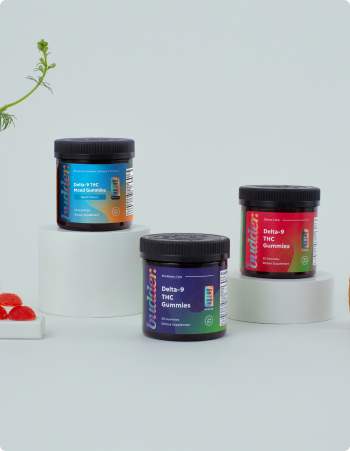Unfortunately for hemp, there are other plants related to cannabis that have made things a bit tricky for CBD users. It’s true even for hemp, you can’t choose your family. Marijuana has gotten most of the media attention, but there are many more plants in the cannabis family besides this psychoactive one. Let’s take a closer look at some of other plants related to cannabis and explore if they have any benefits.
How Are Cannabis Plants Classified?
Let’s first start with the nuclear cannabis family. Botanists divide plants into subcategories under the Taxonomic Information System (TIS) when they classify them. This in-depth naming system classifies plants and animals from their kingdom all the way down to specific species.
Hemp is a member of the family known as Cannabaceae. Within the Cannabaceae family there are eight known family members::
-
Humulus
-
Celtis
-
Trema
-
Grionerra
-
Aphananthe
-
Parasponia
-
Pteroceltis
-
Cannabis
Let’s take a closer look at these genera and the possible benefits of other plants related to hemp.
Plants Related to Cannabis
Cannabaceae is a small angiosperm family. These flowering plants are members of the Rosales order. The Rosaceae family is classified under that same order, which means that cannabis is a distant family member to almonds, plums and apples! For now, let’s take a closer look at the more immediate Cannabacae clan.
Humulus
While this word may look a lot like “hummus,” you’re actually looking at a different common edible plant. Humulus is also known in craft beer circles as “hops.”
Hops give beer its bright, citrusy and earth-like bite. The plant’s terpenes make this flavor infusion possible. Terpenes are also present in broad spectrum hemp products and essential oils. These molecules are responsible for the scent and flavors of plant products, and they also give plants like Humulus their potential benefits.
One of those potential benefits is that hops may support a good night’s rest. While it may feel easier to doze after a few beers, unfortunately for those who have had a few too many, the deep sleep doesn’t last through the night. As soon as the alcohol wears off, we tend to wake up immediately. In fact, a lot of people find it more challenging to fall back to sleep after they have had a few.
Humulus is also a sustainable source of zinc salts. This trait makes hops a welcome addition to many all-natural deodorants.
Celtis
The Celtis genera is another group of plants that’s related to cannabis. This genus has up to 70 species under its classification. Many Celtis plants are grown as ornamental trees, but there’s more to this plant, also known as hackberry, than its good looks.
While many use hackberry interchangeably with Celtis, the hackberry itself is derived from Celtis occidentalis.The tree was cultivated by our ancestors for a variety of uses.
The bark of the hackberry is very flexible and sturdy, which makes it a desirable wood for crafting bows. The fruits from the tree can be used to dye wool. Some even cultivated Celtis for homeopathic reasons, as well. For instance, the Iriquois created tonics with the fruit to alleviate cramping and bleeding associated with menses.
Trema
Also known as the evergreen tree, Trema is another member of the Cannabacae family. There are 15 known species under this umbrella and they can be found all over the globe. These plants have extensive root systems which make them fairly drought-resistant. Trema roots have also been known to improve the soil quality in the areas in which they live.
Throughout Ayurvedic circles, one of the most commonly grown Trema species is Trema orientalis. Historically, the wood of Trema orientalis made great kindling for fires. Today, many manufacturers use it for firecrackers, charcoal and gunpowder.
The leaves and bark can be steeped to make a tonic that our early ancestors used to help support dry throats. They also found these tonics improved their breath.
Gironniera
A group of six tropical deciduous trees comprises this genus. Although there isn’t too much information about the potential benefits of these plants, we do know that their colorful fruits are edible!
The wood from Gironniera trees is very popular in Asian construction since it grows in the region easily and has durable fibers.
Aphananthe
Like Gioronniera, this Cannabaceae family member has six known species. These evergreen trees are typically found in places like Australia, Madagascar and Mexico.
The Aphananthe aspera is the most commonly known species of Aphananthe. This ornamental plant is popular in Asia because of its rough bark. Many people use it for sandpaper, to polish wood products or to create twine and rope.
The Aphanathe cuspidata is another wild species belonging to this family. This plant was added to tonics by our ancestors to help promote healthy skin.
Parasponia
There is little documentation about these cannabis-related plants. You might be able to tell they’re a part of the same family as hemp just by looking at their leaves.
Most research surrounding Parasponia has looked at how it improves the biodiversity in its surrounding soil. The plant’s roots have a symbiotic relationship with rhizobia, a group of soil bacteria that help fix nitrogen in exchange for nutrients.
Nitrogen, along with potassium and phosphorus, is one of the three primary elements you need for healthy compost. Parasponia may boost the microbes in your soil, enriching it to produce a higher yield of fresh fruits, vegetables or cannabis plants!
Pteroceltis
The last member of the Cannabaceae family that isn’t cannabis is Pteroceltis. Pteroceltis is one of the most well-known plants related to cannabis because of its popularity in holistic circles. Many know Pteroceltis better as blue sandalwood.
Sandalwood oil is used in aromatherapy to support mental clarity. Its earthy scent combines perfectly with fruit-based essential oils like lemon, orange and grapefruit, and in some Ayurvedic practices, this oil is used as an aphrodisiac.
Cannabis
The last, but certainly not the least, member of the Cannabaceae family is cannabis. Until recently, the family ties between cannabis plants have made things difficult for some of the members of this family. There are only three species in this genus, and it’s pretty easy to spot the infamous, intoxicating type. Let’s start with the least-known of the three.
Cannabis ruderalis
These are short, stocky cannabis plants that can survive rougher terrains and climates. That’s why you can find an abundance of Cannabis ruderalis in Russia and Siberia. Since they can’t rely on the sun to promote photosynthesis as much as many other plants, Cannabis ruderalis plants are auto-flowering. Growing Cannabis ruderalis differs from cultivating hemp or marijuana.
Cannabis ruderalis, like hemp, has relatively low levels of tetrahydrocannabinol (THC). THC is the psychoactive compound abundantly found in marijuana.
This plant has higher levels of cannabidiol (CBD). Since its CBD to THC ratio is more similar to hemp than marijuana, many international breeders will create hybrids with hemp and Cannabis ruderalis. These practices maintain the integrity of the cannabinoids found in cannabis while making it easier for these plants to grow in harsh climates.
Cannabis indica
Due to its elevated levels of THC, Cannabis indica is predominantly grown for marijuana. Smoking dried flowers from Cannabis indica plants is likely to cause a psychoactive experience for the user.
Cannabis indica plants can also have a litany of other cannabinoids. When there is more than one cannabinoid in a product, it creates an act of synergy known as the entourage effect.
Unfortunately, the intoxicating versions of cannabis made it difficult for hemp to have its day in the spotlight. When marijuana was outlawed in the early 20th century, all forms of cannabis were added to the Controlled Substances list. In fact, the differences between hemp and marijuana were not recognized until recently.
Cannabis sativa
Hemp, which we use to produce our CBD products, is a variety of Cannabis sativa. Importantly, however, not all Cannabis sativa plants are hemp — depending on how they’re grown, they can have higher levels of THC, which most would consider marijuana. Hemp plants used for CBD are grown to have high levels of CBD and low traces of THC.
Seeds from hemp plants are also popular in health and wellness circles. These plant-based proteins contain all of the essential amino acids.
And there you have it! We hope you learned something new about the cannabis family today. Let us know what other questions you have in the comments below!
Thanks for reading! To show how much we appreciate you, we’re going to give you 16% off your next order. Just use code READER16 at checkout.






























































Join In On The Conversation
Your email address will not be published. Required fields are marked * Comments will be approved before showing up.